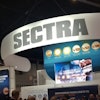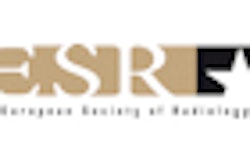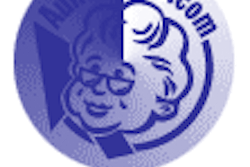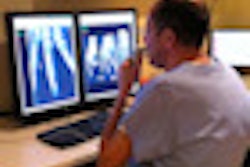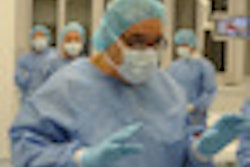Texting via SMS (short message service) is by far the most reliable way to communicate important information to patients, radiologists, and even referring physicians, according to researchers from Saudi Arabia.
In one hospital radiology department, the reliability of communications covering everything from patient appointments to abnormal scan results improved after SMS replaced phone calls and email. Equally important, workflow efficiency also soared.
It's time to send that message, said Nabeel Mishah, a radiographer and healthcare business consultant from King Abdul Aziz University Hospital in Jeddah, in a presentation at ECR 2011 in Vienna.
"Why did we select SMS? Because it's available -- everyone is holding a mobile phone," he said, noting that the cost is about five U.S. cents (or approximately 70 euro cents) per message. "It's a fast human intervention, an automated procedure that's incorporated into our hospital RIS system."
The SMS communication pilot project was initiated in the radiology department with the assistance of the IT department and the group's local RIS/HIS Vendor, Phoenix. From the hospital's RIS, sending an SMS message is as easy as filling in a mandatory field in the patient's demographic data page, he said. For those few patients who don't have a mobile phone, the receptionists ask for the mobile number of a friend or close relative.
Calculating the success rate was easy because the hospital's IT department has a software application that tracks how many SMS messages were sent, the percentage of messages received, and the percentage that failed. Just six months of SMS data -- compared with studies of other communication methods at the hospital -- were enough to convince the investigators that they had tapped into a better way of conveying key information.
The pilot study compared SMS messaging to earlier data on the efficiency of phone calls and email messages for MRI and mammography, in addition to several measures of workflow and patient care efficiency, he said. SMS messages from the first half of 2010 were retrieved from the RIS and analyzed to calculate the message delivery rate and its relation to patient care -- especially as they related to "no show" patients and those who show up unprepared for their scans, Mishah said.
"Maybe they weren't fasting or they were not prepared to be sedated," he added.
SMS communications were divided into three groups for the study:
Messages to patients. Patients receive an SMS message when their exam is approved, and again when an appointment for the imaging procedure is created or rebooked after a patient cancellation, Mishah said. SMS is used to send a patient preparation reminder before the exam (fasting, etc.).
Messages to radiologists. Radiologists receive an SMS message in the event of a case delay or reporting delay.
Messages to referring physicians. SMS messages go out immediately to the referring physician in the event of incidental or abnormal findings that require immediate notification.
When SMS was first implemented in 2008, the message delivery rate was only 93%. It turned out that some patients' mobile phone numbers weren't successfully transferred with the changeover to a new RIS. To correct the problem for the present study, hospital staff was asked to verify that a correct mobile phone number had been entered in each patient record. Back in 2006, patients received phone calls for communication of their appointment information, but an analysis of that method's efficiency showed a successful message delivery rate of just 55%.
As for emailing, an analysis showed only 92% of email messages were successfully delivered -- principally because some Internet clients treated the mass appointment mailings as spam, which was never delivered to the inbox, Mishah said.
"The MRI in our institution is pretty loaded up, and the patient waiting time is around six months," he explained. The heavy demand lead to major workflow inefficiencies when patients didn't show up for their appointments.
Before SMS, there were 653 patients on the "no show" list. After SMS implementation, the total fell to 196 patients -- a reduction of 70%. Similarly, rebooking patients who show up poorly prepared for an exam -- e.g., failing to fast before the scan -- caused serious workflow disruptions prior to SMS implementation. In the six months before SMS, there were 420 rebookings, compared to 273 after SMS implementation, a reduction of 35%.
Finally, there were just five SMS messages to referring physicians about important findings over the six-month period, but all were received and acted upon in a timely manner soon after the exam.
Overall, the implementation of SMS led to a tremendous improvement in patient care, attendance, and communication compared to the situation before implementing SMS, Mishah said. All patients received 100% of the SMS messages, the "no show" list decreased by 70%, the rebooked patient list decreased by 35%, and referring physicians were informed successfully for early intervention.
"SMS technology is available and easy to use, [and is] a cost-effective and efficient way to communicate with patients and physicians for better patient care, department workflow, and utilization of resources," he explained.
Since ECR, an SMS service has been introduced to other areas within the hospital, and it is now working in outpatient clinics and the admissions office to communicate any cancellations. The radiology department is planning to expand SMS methods to include other imaging modalities such as CT, ultrasound, and nuclear medicine.
"This is expected to be completed by September 2011, while the IT department is currently working to include other areas and units," Mishah said.


